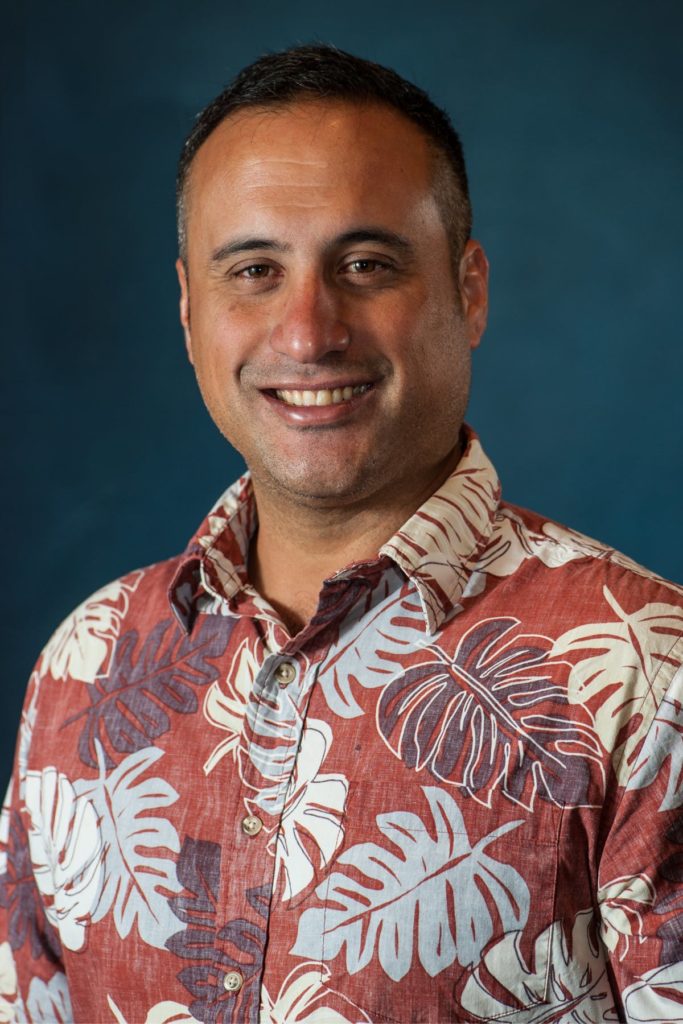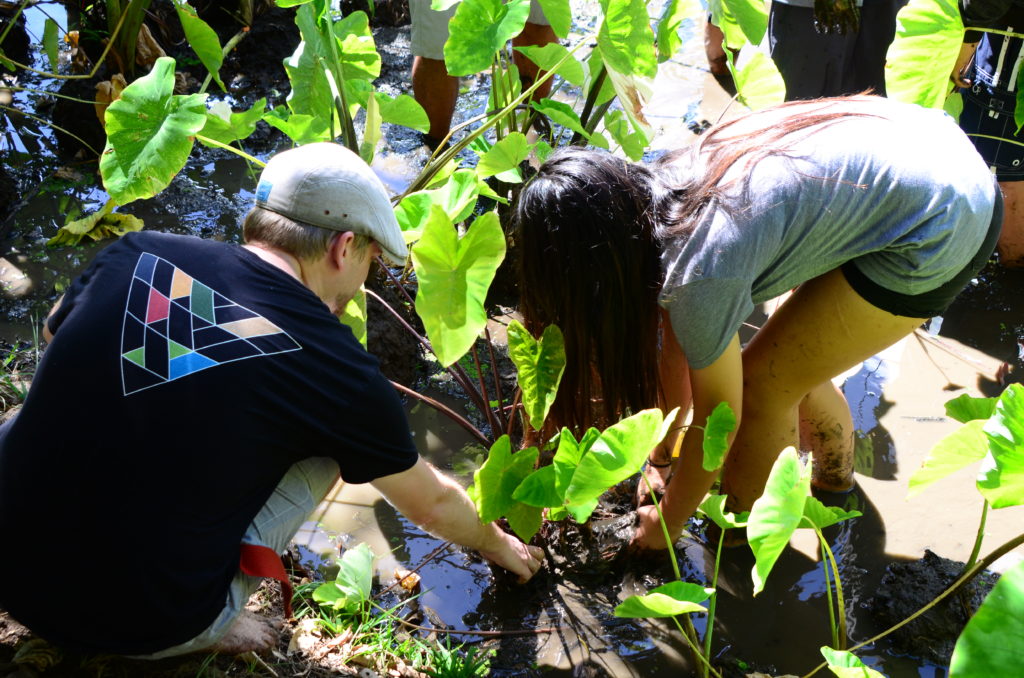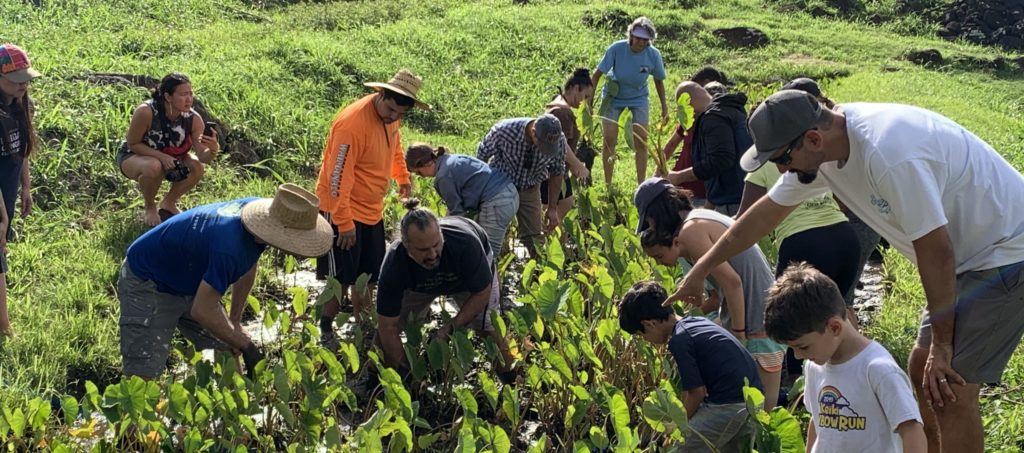Relying on the Past to Shape the Future
The ahupua‘a was an efficient and sustainable land management system used in ancient Hawai‘i. Shaped by the island’s geography, the ahupua‘a was a wedge-shaped area of land running from the mountains to the sea, following the natural boundaries of the watershed. Each ahupua‘a contained the necessary resources of the community, including fish and salt ponds, fertile farmlands to grow crops, and forests in upslope areas that provided wood. Villagers from the coast traded fish for other foods or for wood to build canoes and houses. Specialized knowledge and resources peculiar to a small area were also shared among ahupua‘a. Amidst a belief system that emphasized a spiritual relationship between elements and being, stewardship of the land and its resources were enforced through the kapu (taboo) system that placed restrictions on fishing, harvesting and planting—creating a well-balanced sustainable ecosystem.
Since those early times, Hawai‘i has all but moved away from self-sufficiency. Today, about 90 percent of the food and supplies needed to sustain the island population arrives by ship or airplane—and must be constantly replenished in a matter of days. Farming is now done on a relatively small scale, with most of the farms primarily catering to a small niche market of restaurants. Native Hawaiians, once stewards of the land and perpetuators of remarkable indigenous practices of sustainability, have lost most of their cultural and spiritual connection to it.

How might we utilize innovation when we start from an indigenous-centered approach grounded in a shared understanding of the science and technology that has been employed to manage Hawai‘i’s biosystems for over a thousand years? How might we move from being research subjects to equal partners? While these may seem like simple questions, they are fraught with scars and emotions, yet include a shared commitment to creating a better future for Hawai‘i. In response to these questions and to address other issues brought forth in discussions with indigenous communities of practice and cultural practitioners, the University of Hawai‘i (UH) created the Office of Indigenous Innovation (OII).
“The core premise of the UH Office of Indigenous Innovation is that the indigenous ancestral knowledge underlying precontact biosystems management in Hawai‘i demonstrates a comprehensive application of science and engineering technologies, refined over millennia and optimized for calibration between human and natural system needs,” said OII Director Kamuela Enos.
One of the organizations OII has closely partnered with is the Purple Mai‘a Foundation, a technology education non-profit that works to educate and empower the next generation of culturally grounded, community serving technology innovators and problem solvers. Both organizations are assisting the Hawai‘i Institute of Marine Biology and He‘eia Natural Estuarine Research Reserve to restore resilience and abundance of the He‘eia ahupua‘a, including a (K)new Futures competition that has resulted in the creation of two UH startups. Recently, OII supported Purple Mai‘a’s hosting of an inaugural National Science Foundation biocultural restoration workshop that featured over 350 participants engaged in discussions on science and technology embedded within place-based ancestral knowledge systems.

Enos feels that the timing of OII’s creation was incredibly important. Several months after the office was founded, the COVID-19 pandemic emerged. The turbulence of this time allowed his office to put forth a narrative to meet it, which it still centers on today—that of hulihia, where systems are destroyed they can be rebuilt stronger.
“In the kānaka maoli (Native Hawaiian) world view, we lived with and revered disruption. The extreme isolation of our ancestral society organically embedded resilience to be the very core of the entirety of our political, economic, spiritual and social frameworks,” said Enos. “This reality spurred our ancestral systems to optimize a collective, circular, and regenerative economy, with the end goal of accruing mana (life force or healing power)—which was measured as the bequeathing of abundance.”
In alignment with Enos’ statement, OII aspires to play an important role in helping stakeholders to continue to address Hawai‘i‘s post-COVID recovery, especially in the areas of restoring a resilient food system and diversifying the state’s economy.
“The pandemic has highlighted the need for an economy less tied to tourism and less vulnerable to global events,” said Steve Auerbach, interim director of the UH Office of Innovation and Commercialization, under which OII is housed. “Through the UH Office of Indigenous Innovation and in partnership with the greater community, the University of Hawai‘i is working hard to carve out the parts necessary to build a resilient and sustainable innovation economy.”
Enos added, “Our ancestors have already proven our ability to be self-reliant, resilient, generative, and healthy on our own terms. I welcome the opportunity to work with the vast resources within the University of Hawai‘i System and its many partners to demonstrate how we catalyze and scale our ‘ike (knowledge) to meet the needs of Hawai‘i and the world.”

